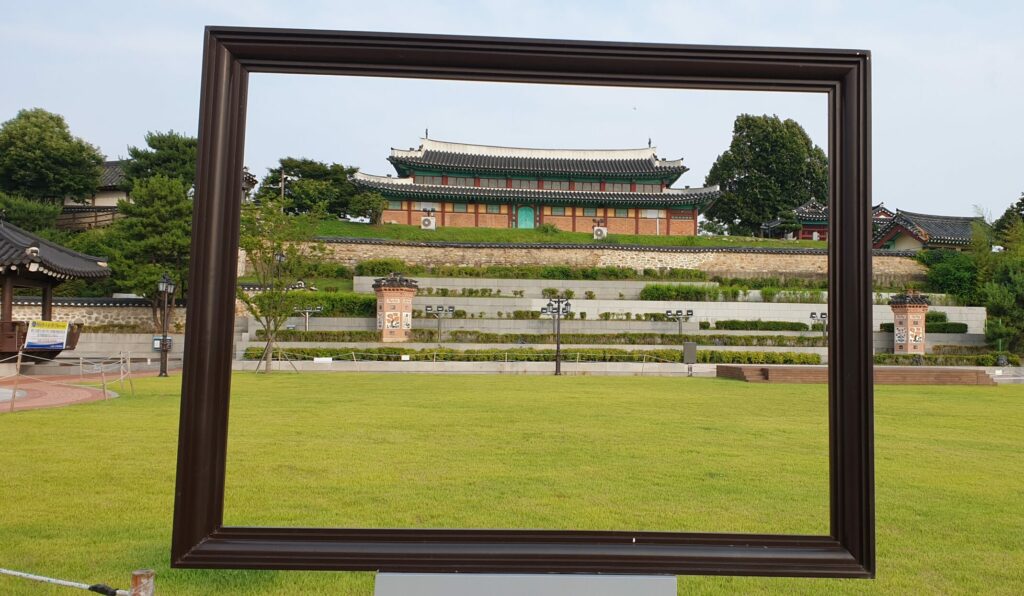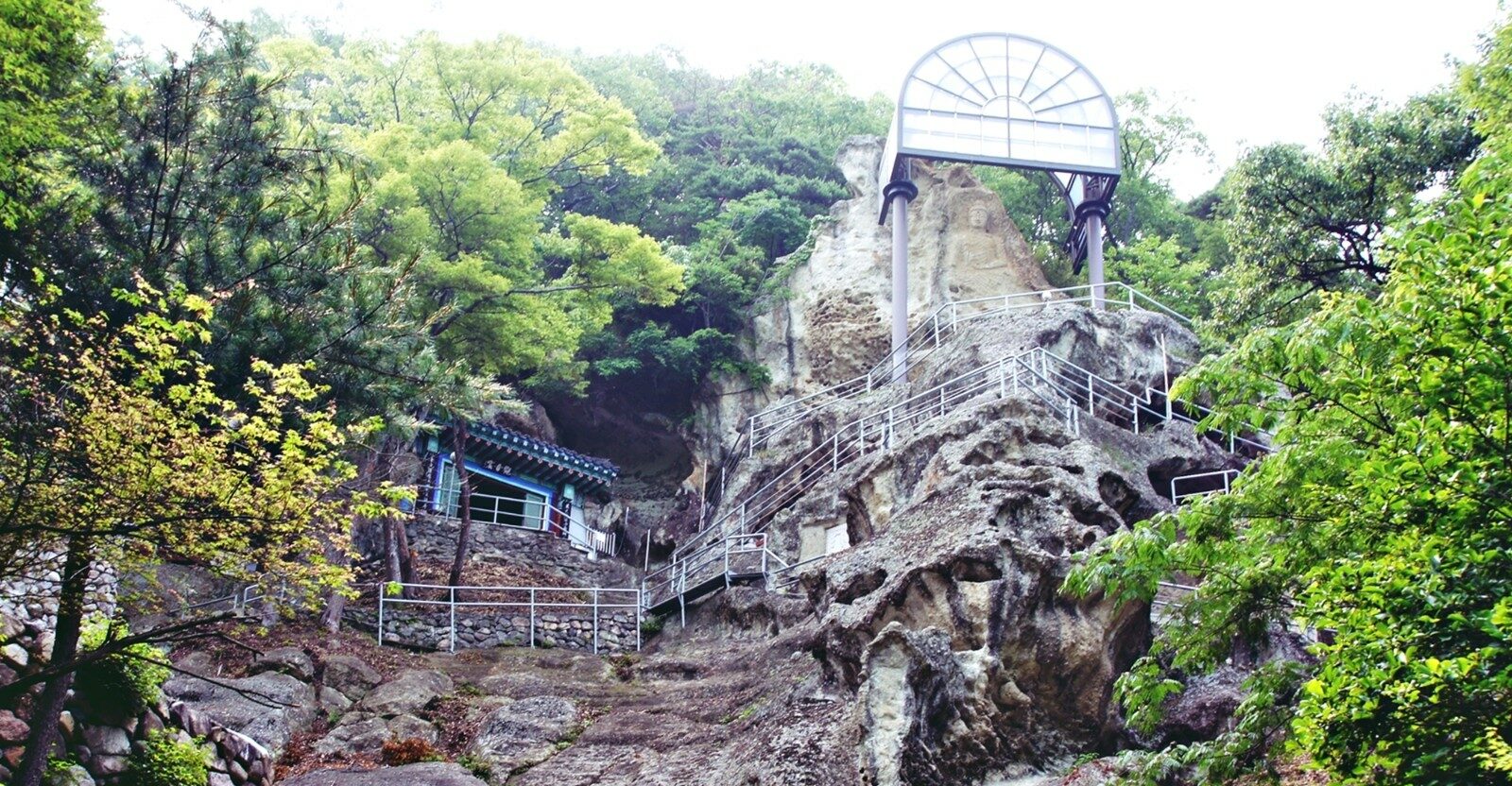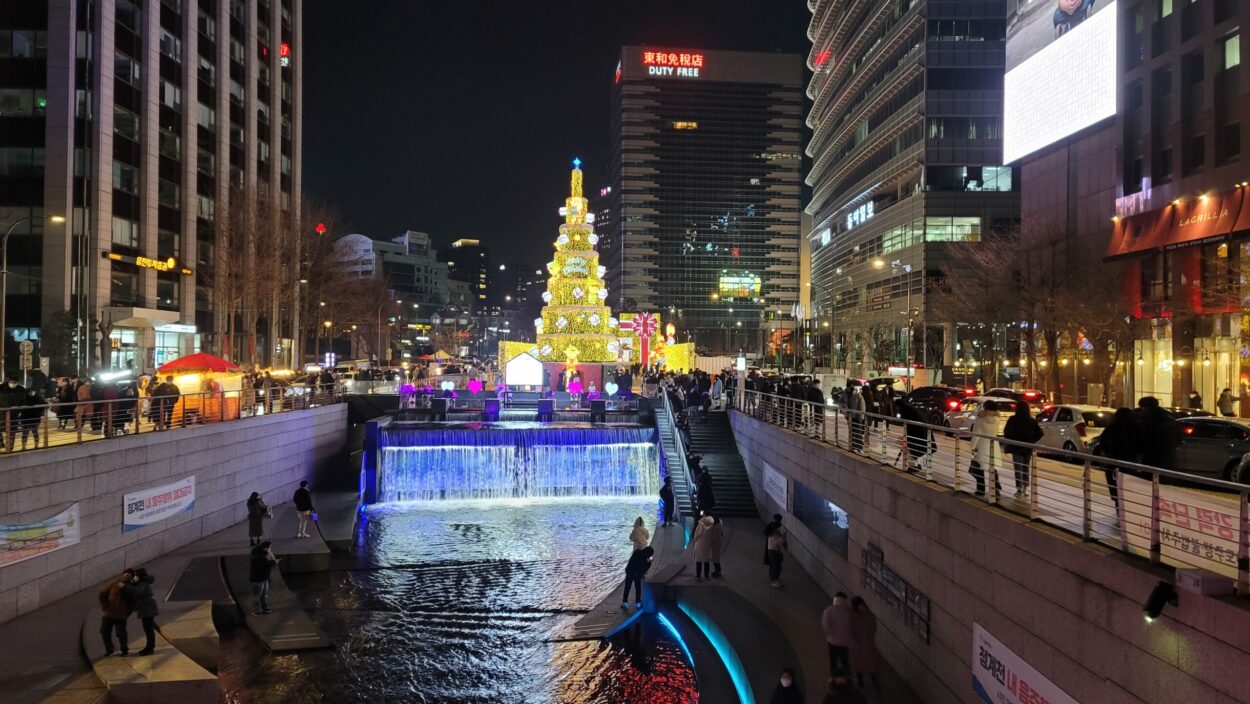Jeondeungsa Temple, located within the historic Samrangseong Fortress on Ganghwa Island, stands as a remarkable destination for travelers seeking a harmonious blend of spirituality and history. Ado Hwasang originally established Jeondeungsa Temple, a spiritual and historical sanctuary, in 381 CE. During the Goryeo Dynasty, people initially named this ancient temple Jinjongsa. Over the centuries, it has undergone various transformations. Its current name, Jeondeungsa, means “to deliver Buddhist enlightenment.” This reflects its enduring significance as a revered place of worship.
Historical Significance:
Jeondeungsa Temple is not only a spiritual sanctuary but also a site rich with historical narratives. The walls of Daeungjeon Hall, the temple’s main building, bear the names of soldiers who courageously fought against the French Navy in the late 19th century. These inscriptions serve as a poignant testament to their prayers for victory. They link the temple’s past with Korea’s military history. Visitors can marvel at the intricate architectural details that highlight the artistry of the mid-Joseon dynasty. It is a prime example of traditional Korean temple architecture.
Architectural Wonders:
Jeondeungsa Temple features several notable structures, each with its own cultural and historical significance:
- Daeungjeon Hall: This is the main hall, enshrining the Sakyamuni Buddha Triad.
- Yaksajeon Hall: Recognized as a cultural treasure, this hall holds great importance.
- Beomjong Bell: Constructed in the 11th century, this bell is a significant artifact within the temple grounds.
- Yangheonsu Victory Monument: This monument commemorates historical events linked to the temple.
The serene environment surrounding these structures is enhanced by ancient trees and seasonal flowers. This offers a picturesque setting for contemplation and relaxation.

Nearby Attractions:
While visiting Jeondeungsa Temple, consider exploring these nearby travel spots:
- Ganghwa Peace Observatory: This observatory provides stunning views of North Korea. It serves as an essential site for understanding the Korean Peninsula’s divided history.
- Manisan Mountain: A beautiful hiking destination, this mountain holds cultural importance. It is believed to be related to Dangun, the legendary founder of Korea.
- Ganghwa History Museum: Located nearby, this museum showcases artifacts and exhibits that narrate the rich history of Ganghwa Island. It highlights the island’s strategic importance throughout Korean history.
Jeondeungsa Temple stands as a beacon of Korea’s spiritual heritage and historical resilience. Its combination of architectural beauty, historical depth, and serene surroundings makes it an essential stop for anyone traveling to Ganghwa Island. Whether faith, history, or nature’s beauty draws you, Jeondeungsa Temple provides an enriching experience. It resonates with visitors long after they leave.
Famous Foods:
While exploring Ganghwa Island, don’t miss out on tasting some of its famous local delicacies:
- Ginseng Chicken Soup (Samgyetang): A nourishing soup made with young chicken stuffed with ginseng, garlic, and rice. It is renowned for its health benefits.
- Korean BBQ (Bulgogi): Tender, marinated slices of beef grilled to perfection, offering a savory and delightful culinary experience.
- Kimchi: Korea’s iconic fermented vegetable dish, providing a spicy and tangy complement to any meal.
These dishes not only satisfy your palate but also enrich your cultural exploration of this remarkable region.
“Want to visit this place effortlessly? Let us customize your trip!”




